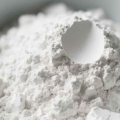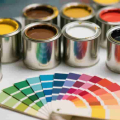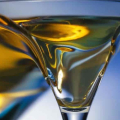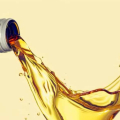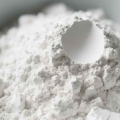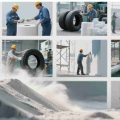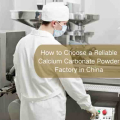- Welcome to China Calcium Carbonate Manufacturer
- WeChat:15078781000
Introduction
Light calcium carbonate (LCC), a synthetic inorganic material, is widely used in rubber, plastics, paper, and coatings due to its low cost, non-toxicity, and versatility. However, its high surface energy and hydroxyl groups cause particle agglomeration, limiting its effectiveness. Surface modification solves these issues, enhancing compatibility with organic polymers. This article breaks down LCC’s production, modification methods, and how to evaluate their success.
1. What is Light Calcium Carbonate?
Light Calcium Carbonate(LCC),also known as Ground calcium carbonate (GCC),LCC is chemically synthesized, giving it a larger sedimentation volume than ground calcium carbonate. Its key advantages include:
High stability
Easy processing
Low production cost
How is LCC Made?
The lime milk carbonation method dominates industrial production:
Calcination: Limestone is heated to produce calcium oxide (CaO) and CO₂.
Hydration: CaO reacts with water to form calcium hydroxide (Ca(OH)₂).
Carbonation: CO₂ is bubbled into Ca(OH)₂ slurry, precipitating LCC.
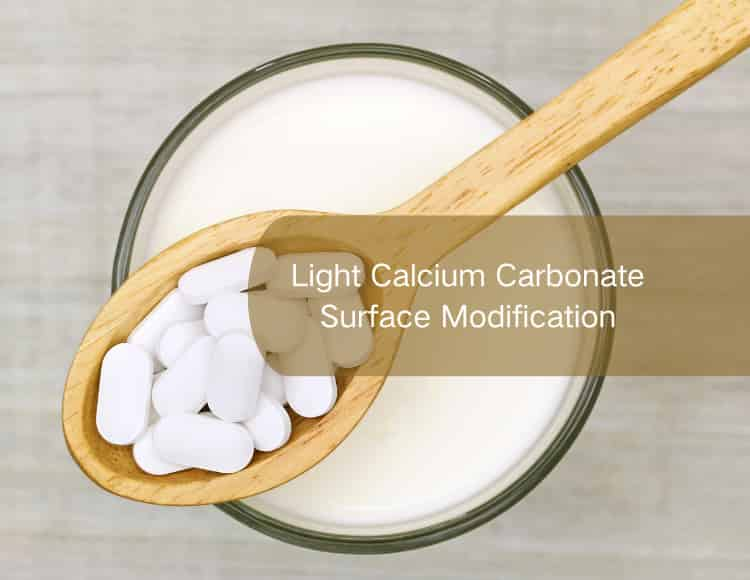
2. Why Modify Light Calcium Carbonate?
Unmodified LCC particles:
Absorb moisture and clump together.
Poorly disperse in plastics or rubber.
Reduce mechanical strength of composites.
Surface modification addresses these issues by:
Lowering surface energy.
Adding hydrophobic layers.
Improving bonding with polymers.
3. Light Calcium Carbonate Surface Modification Methods
3.1 How Does Modification Work?
Modification relies on chemical reactions or physical interactions:
Chemical: Grafting, polymerization, or forming bonds (e.g., stearic acid reacting with Ca²⁺).
Physical: Coating particles via van der Waals forces.
Example: Stearic acid modification involves three steps:
Stearate ions bind free calcium ions in solution.
They react with calcium ions on LCC surfaces.
A hydrophobic calcium stearate layer forms, preventing clumping.
3.2 Four Main Modification Techniques
| Method | Process | Pros and Cons |
|---|---|---|
| Dry Process | Coat particles mechanically. | ✅ Fast, no wastewater. ❌ Uneven coating. |
| Wet Process | Mix modifiers in liquid with LCC. | ✅ Uniform coating. ❌ Requires wastewater treatment. |
| In-situ | Modify during LCC synthesis. | ✅ Reduces agglomeration. ❌ Not yet scalable. |
| Composite | Combine multiple methods. | ✅ Enhanced effects. ❌ Still experimental. |
3.3 Key Surface Modifiers
A. Surfactants
Types: Fatty acid salts (e.g., sodium stearate), phosphate esters.
How They Work:
Hydrophobic tails repel water.
Polar heads bond with LCC surfaces.
Best For: Cost-effective solutions.
B. Coupling Agents
Titanate Couplers: Improve polymer bonding but degrade at high temps.
Aluminate Couplers: Heat-resistant, ideal for high-temperature plastics.
C. Polymers
Form a “core-shell” structure (e.g., styrene-acrylic copolymers).
Boost dispersion in polypropylene and PVC.
D. High-Energy Methods
Use plasma or radiation to activate surfaces. Rarely used due to high costs.
4.Evaluating Surface Modification Effects
4.1 Direct Testing Methods
Settling Volume: Measure volume after 3 hours in water. Higher volume = better dispersion.
Activation Degree:
Mix LCC with water. Unmodified particles sink; modified ones float.
Oil Absorption:
Lower values mean better compatibility with resins.
4.2 Particle Size & Surface Area
Laser Particle Analyzers: Measure average particle size (smaller = better).
Surface Area: Larger surface area = less agglomeration.
5. Future Applications of Modified LCC
Nanotechnology: Nano-sized LCC for drug delivery or electronics.
Eco-Materials: Biodegradable plastics, low-VOC paints.
High-Performance Composites: Stronger, lighter automotive parts.
Key Takeaways
Surface modification is essential for maximizing LCC’s performance in polymers.
Wet and dry processes are industry favorites, while in-situ methods show future promise.
Testing via activation degree or oil absorption ensures quality control.
Modified LCC is poised to revolutionize industries from packaging to biomedicine, offering greener, higher-performance solutions.
About Jintai and our Products
Jintai Factory is a leading calcium carbonate supplier specializing in light calcium carbonate (LCC) and heavy calcium carbonate(HCC). With advanced production facilities and a focus on quality, Jintai offers products ranging from 325 to 2000 mesh, tailored for applications in plastics, coatings, and rubber industries25. Their commitment to innovation ensures high-performance, eco-friendly solutions for global clients.
Refer to:https://patents.google.com/patent/CN101914311A/en
